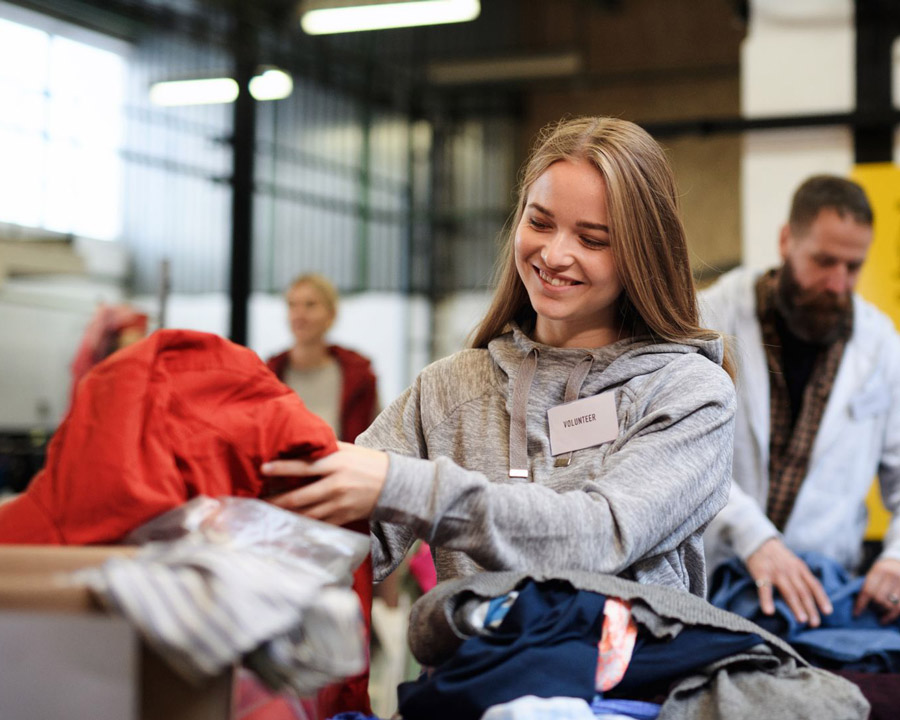Donate clothes: Empower your community
Uncover the transformative power of clothing donations and learn how your generosity can make a lasting impact.
In Australia, the simple act of donating clothes has become a powerful catalyst for positive change. As we face growing environmental concerns and economic challenges, the importance of clothing donations cannot be overstated. By redirecting unwanted garments from landfills to those in need, we not only reduce waste but also foster a sense of community and support.
According to the Australian Bureau of Statistics, Australians discard an average of 500,000 tonnes of textiles and leather each year. Research has also shown that 82% of Australians hold on to their clothing donations for up to three months, preventing them from being used by those in need. This presents a significant opportunity for communities to get involved in charitable clothing donations and bridge the gap between those who are looking to make clothing donations and those who need it the most.
As we explore the various ways to donate clothes and encourage community involvement, we’ll discover how these simple acts of kindness can create ripple effects throughout our society, strengthening bonds and supporting those who need it most.
Inspiring action: Approaches to donate clothes
Engaging your community in clothes donation initiatives is crucial for creating lasting impact and fostering a culture of giving. By involving more people, we can significantly increase the volume of donations and ensure that quality clothing reaches those who need it most. Community involvement also strengthens social bonds, raises awareness about textile waste, and promotes sustainable practices. The following innovative approaches go beyond traditional donation methods, offering creative ways to inspire and motivate your community to participate actively in clothes donation efforts.

Utilise charity clothing bins
Place clearly marked charity bins in high-traffic areas such as shopping centres, community halls, and sports clubs. Ensure the bins are well-maintained and emptied regularly to encourage consistent use. Partner with local charities to manage the bins and distribute the donations effectively. Provide information on the bins about the impact of donations to motivate community members.

Organise neighbourhood swap events
Host regular clothing swap events in your local community centre or park. Encourage neighbours to bring gently used items that are in good condition and exchange them for others. This not only promotes recycling but also fosters community connections. Set up a donation station for leftover items to be given to local charities, ensuring nothing goes to waste and everyone can use them.

Partner with schools for donation drives
Collaborate with local schools to organise clothing drives near your area. Engage students by creating themed donation weeks, such as "Winter Warmth Week" or "Back-to-School Basics". Offer incentives like casual dress days for classes that bring in the most donations. This approach educates young people about the importance of giving back while collecting much-needed clothing items.

Host “Declutter for Good” workshops
Organise workshops that combine decluttering techniques with information about clothing donation. Invite professional organisers and representatives from local charities to speak. Provide tips on sustainable fashion and the importance of quality over quantity. Conclude the workshop with a collection drive, allowing participants to immediately put their newfound knowledge into action.
What Our Community Says About Us
Our Partners





Youthsafe: Donate clothes. Empower young Australians.
With a wide range of services and programs, Youthsafe focuses on creating safer, more inclusive communities for youth. Their initiatives span various areas, including mental health support, education and employment assistance, and programs promoting social engagement.
Learn more about Youthsafe’s services and how your clothing donations can make a difference in young lives.
FAQs
Businesses can play a crucial role in promoting clothes donations. They can organise workplace donation drives, offer incentives for employee participation, or partner with local charities. Companies can also provide storage space for donations or sponsor clothing bins. Some businesses opt to create cause-related marketing campaigns, donating a portion of sales to clothing charities.
Donating clothes significantly reduces textile waste in landfills, where synthetic materials can take hundreds of years to decompose. Donating also reduces the demand for new clothing production, which is resource-intensive and often involves harmful chemicals and excessive water use.


